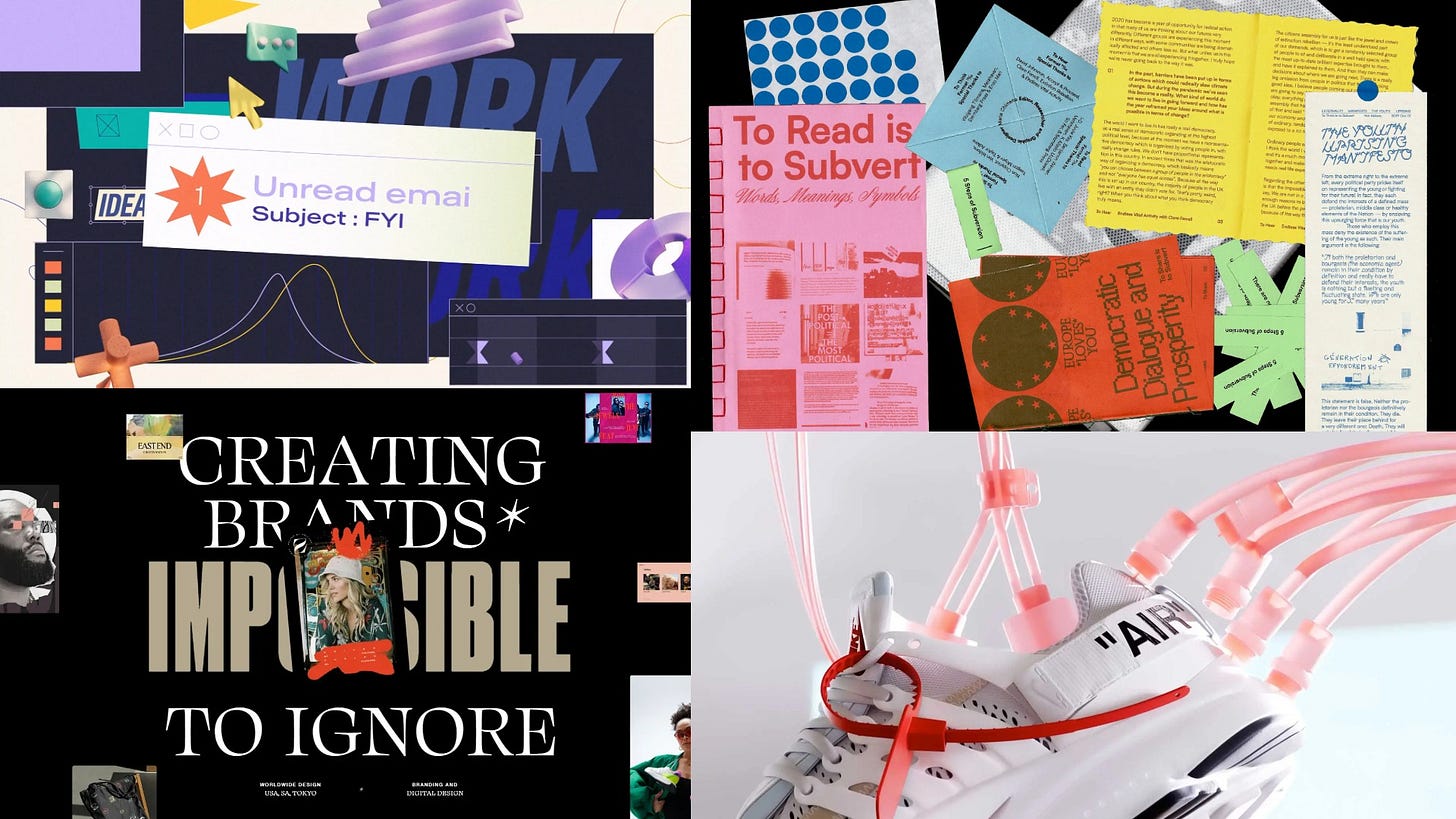Issue 62
500 rabbits classifying the periodic table of elements
Hello, dear readers! 👋
In this issue, among other things:
Why are glass bottles of different colors used for different products
The concept of friction in UX design and its use in teaching recommendation algorithms
Why does changing the scroll speed disorient users
A new neural network for writing code from Stability AI
A large cheat sheet on styles for Stable Diffusion and SDXL
Free stock photos with natural images
Emerging competitor for Photoshop
Online collection of 13,300+ free realistic PBR fabric textures
Enjoy reading!
🗞 News and articles
What’s The Best Color For Your Bottles’ UV Protection?
Nahla Davies told about the 5 most common colors of glass for bottles, about their differences and what products are usually packed in them.
Glass differences:
Dark brown glass — absorbs ultraviolet light best and is used for packaging products that can deteriorate under the influence of light. For example, for beer and other vegetable products
Blue glass — provides a moderate level of protection from UV radiation. It is used in cases when the packaging needs to be given an unusual look. For example, for wine or vodka
Green glass — does not provide sufficient protection from UV radiation, but protects from visible light. It is cheaper than dark brown glass, so it is often used in order to save money
Frosted white glass — partially protects only from visible light
Transparent glass does not protect against UV radiation and light, therefore it is used for products that are not affected by these factors. For example, for water or juices
Using Friction As A Feature In Machine Learning Algorithms
A large detailed article by Maximilian Piras, in which he discusses the concept of "friction" in UX design and its benefits in the context of learning recommendation algorithms. Friction in the interface can be called intentional complication of the process, which helps to protect the user from accidental actions or helps to collect additional data about a person to make recommendations or adapt the interface.
Maximilian also talks about how applications read signals from the user to make recommendations, what is the secret of TikTok algorithms, why the form factor of the interface plays a key role in learning algorithms and how algorithms will adapt the product to the user in the AI era.
⚡️ Briefly
Scrolljacking 101. NNGroup conducted a study and found out that changing the basic speed and direction of scrolling (Scrolljacking) can disorient users and increase cognitive load. Nevertheless, they also found out that such a technique can be useful in rare cases and gave advice on its use.
New technologies
Stability AI has released a new LLM called StableCode, which is designed to generate, correct and explain code.
The model is trained on data from the BigCode open source project, as well as in the programming languages Python, Go, Java, JavaScript, C, markdown and C++. It is designed to simultaneously process a much larger amount of code (2-4 times more than in previous open models). This allows you to view or edit a volume of code approximately equal to five medium-sized Python files.
The beta version of the model is already available on Hugging Face.
🧘 Inspiration
Zerion. A refreshing redesign of the developer of the web3 wallet for cryptocurrency and NFT. The style is based on a pleasant neon color scheme, laconic animations and collages that combine 2D and 3D graphics.









